Journal
Visiting RSPB Bempton Cliffs
The RSPB Bempton Cliffs is a birdlife haven on the East Riding of Yorkshire coast. It’s a fabulous day out for families, birdwatchers and walkers, set along the sprawling cliffs of the North Sea.
The Bempton Cliffs are famously known for the hundreds of thousands of seabirds that call its cliffs home. While visitors flock there year-round, it’s especially popular in spring when the puffins roll into town. It’s also home to Albie, the Northern Hemisphere’s only albatross.
So, whether you plan to hike, birdwatch or simply get some sea air, let’s see what Bempton has to offer. In this blog, we’ll explore RSPB Bempton Cliffs and its magnificent wildlife…
About RSPB Bempton Cliffs
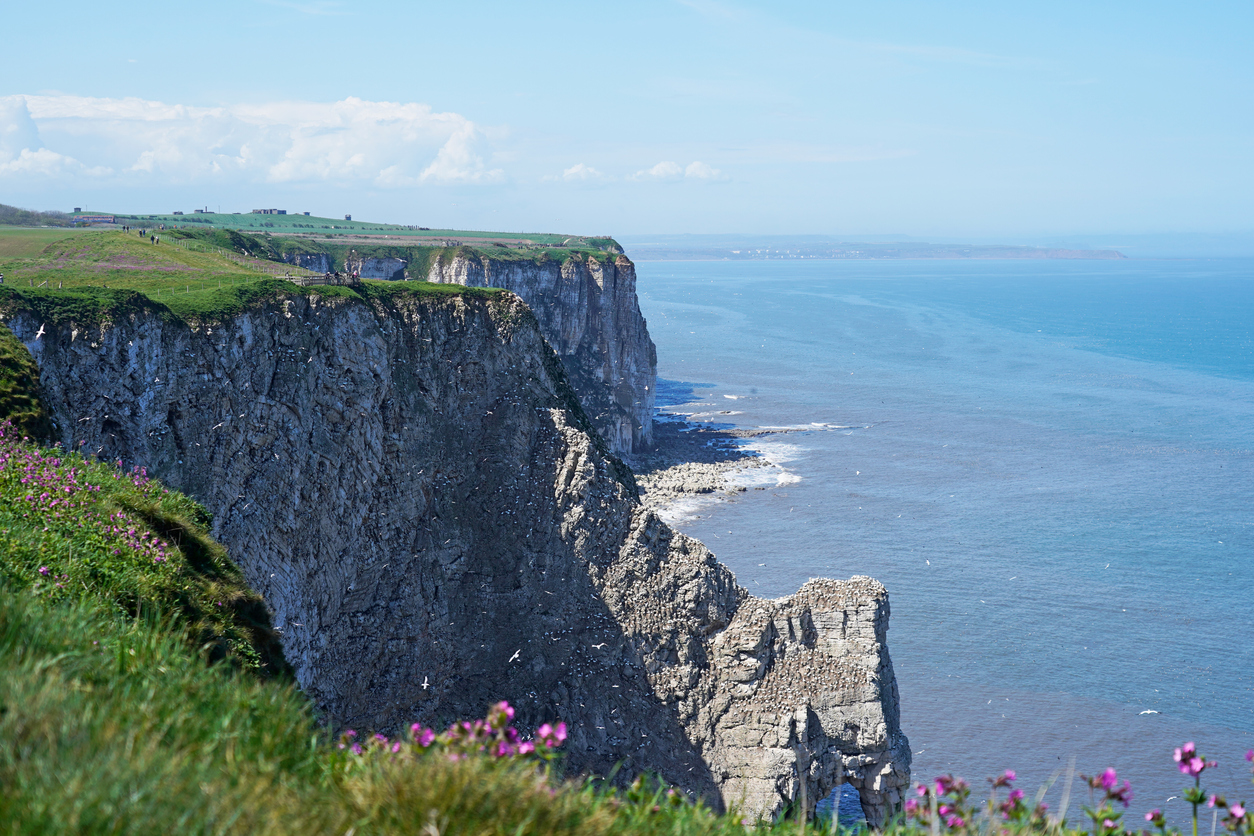
Bempton Cliffs, nestled on the Yorkshire coast close to Bridlington, is home to the UK’s largest seabird colony. Each year, its chalk cliffs host up to half a million birds – attracting wildlife enthusiasts from around the world.
Wildlife at Bempton
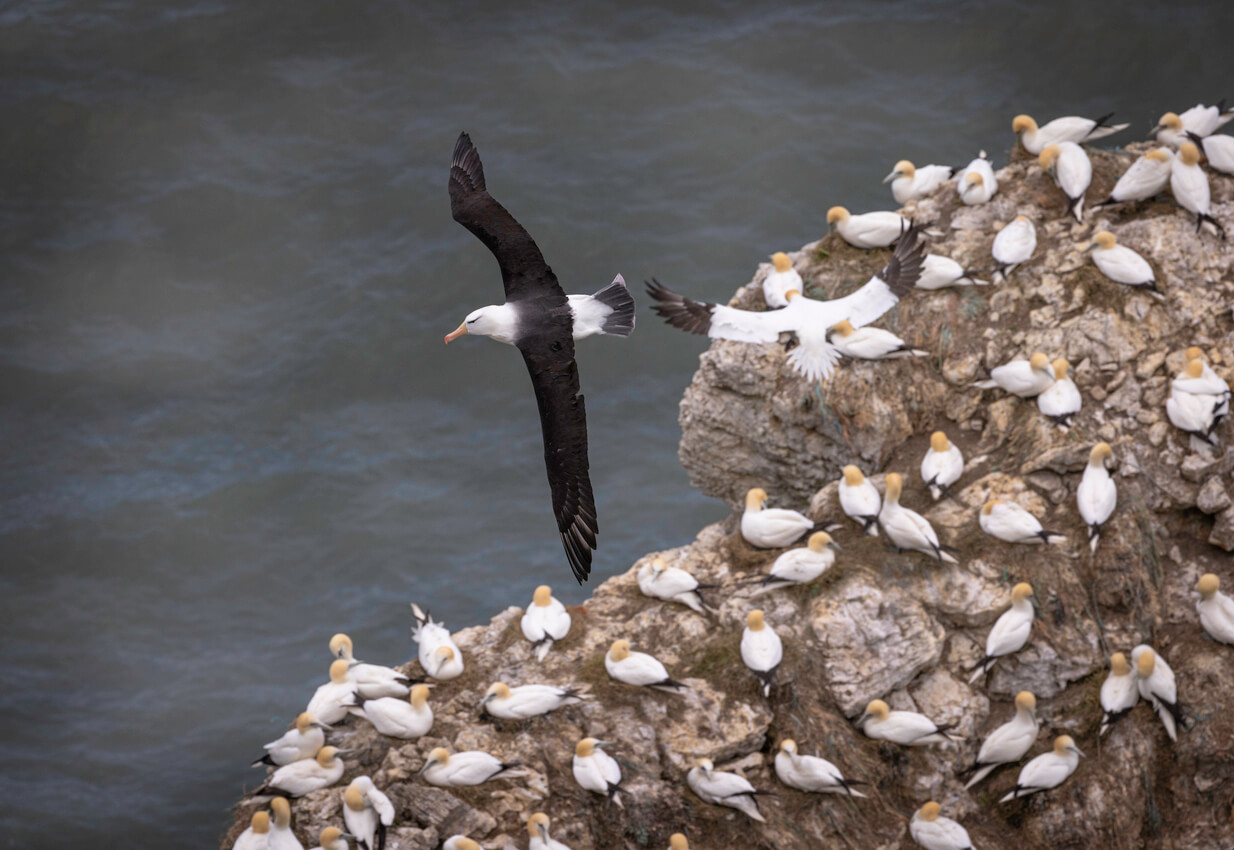
The stunning nature reserve is home to several species of birds – including the Bempton Cliffs puffins and the UK’s largest seabird, the gannet. In spring, it becomes one of the UK’s top wildlife spectacles as its cliff tops, ledges and shores turn into seabird city.
Visitors can watch the action unfold from the cliff-top viewing platforms. From there, you can spot nesting birds in the cliff face’s nooks and crannies, or look out to sea to spot diving birds searching for dinner. Viewpoint volunteers are always on hand to help identify species.
Eagle-eyed visitors may also spot sea life such as seals, porpoises, dolphins and whales amongst the waves.
The Seabird Centre
Visitors can head to The Seabird Centre to find a host of information on Bempton’s wildlife, including the renowned Bempton Cliffs puffins. In the visitors’ centre, you’ll also find a shop, cafe, accessible toilets and baby changing facilities.
Enjoy a bite to eat as you admire the breath-taking views from the Bempton Cliffs cafe.
Where are the Bempton Cliffs?
The Bempton Cliffs wildlife reserve is located on a 5-6 mile stretch of coastline on the headland between Flamborough Head (and the impressive Flamborough Head Lighthouse) and Filey.
Use this Bempton Cliffs Map to discover it’s idyllic location:
Drivers can find it by heading to:
- Cliff Lane, Bempton, Bridlington, England, YO15 1JF.
On a typical day, Bempton is around 30 minutes drive from Scarborough, 20 from Filey and 10 from nearby Bridlington. By train, Bempton station is on the Hull to Scarborough line, with a walk of just over a mile to the cliffs.
Visitors with dogs are welcome on the footpaths but should keep them on a lead at all times to protect wildlife.
Bempton Cliffs Puffins
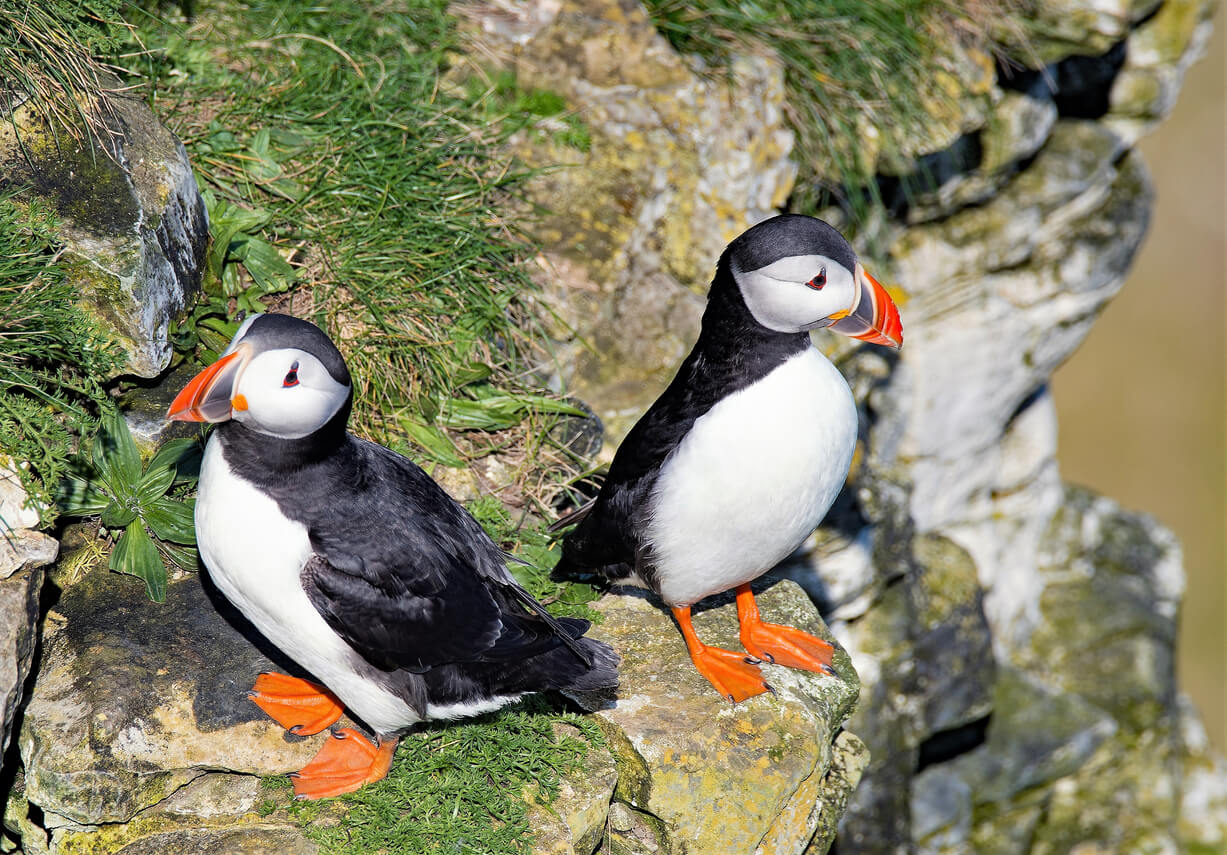
With their striking orange beaks and entertaining manner, the Bempton Cliffs puffins are usually the star of the show. Thousands of visitors travel to Yorkshire to see the Bempton Cliffs puffins each year, typically between April and July. The puffins spend winters at sea before returning to Bempton in the spring.
The RSPB estimates that around 4,000 pairs of puffins call Bempton Cliffs home – returning to mate with the same partner every year. If you’re lucky, you might also spot the puffins at Bempton fishing to feed their baby pufflings.
Other Birds at Bempton Cliffs
Puffins aside, there are many other bird species to spot at Bempton. With the educational resources and volunteers to help, you’ll soon learn how to spot them.
Albatross
In the past few years, Bempton Cliffs have been home to the Northern Hemisphere’s only albatross, Albie. Typically found in the south Atlantic, it’s thought that the Bempton Cliffs Ablatross, Albie, flew off-course and ended up in Yorkshire, where he has returned for the past two years. Albie’s arrival is always a big deal and attracts thousands of birdwatchers.
Gannets
Gannets, the UK’s largest seabirds, call Bempton Cliffs home between January and November. Bempton is actually Britain’s largest gannet colony, with well over 1,500 mating pairs. They can make for dramatic viewing – gannets can have a two-metre wingspan and dive into the sea at 60 miles per hour to find food.
Kittiwakes
Kittiwakes are another common bird at Bempton, with around 75,000 pairs living on the cliffs. They look quite similar to gulls and, like puffins, spend the winters out to sea.
Guillemots
A large colony of guillemots also lives at Bempton. These brown and white birds can be a fascinating watch – at just three weeks old, youngsters will jump from the cliffs into the sea. There, they’ll learn to dive for food and swim with their wings.
Razorbills
Another common bird to spot at Bempton is the razorbill. They come from the same family as puffins and guillemots and look a little bit like a penguin. Razorbills prefer the lower cliffs and are extremely good divers.
Fulmars
You might also spot fulmars on your day out at Bempton Cliffs. They used to only live in the north of Scotland, but now also call the Yorkshire coast home. Look out for the gull-like bird gliding around the cliffs towards their nests.
Which Birds Will I See on My Trip?
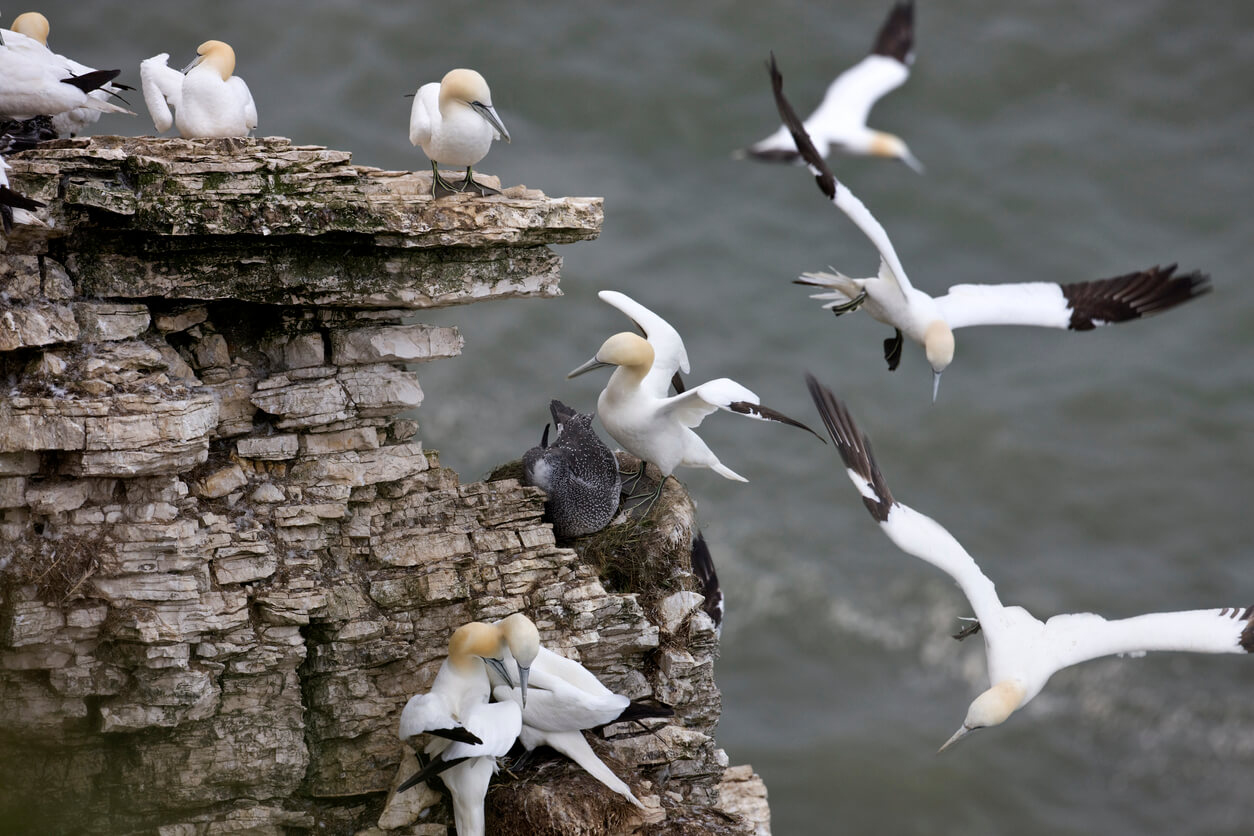
While the star attractions tend to be seen most common between April-July, there is something to spot at Bempton all year round.
- In spring, thousands of birds head to the cliffs to raise their young. This is prime puffin time, as well as the other star birds. You may also see gulls, shags and various sea life.
- In summer, you’ll visit during the breeding season. This means hundreds of thousands of birds, along with sea life.
- Autumn is a little calmer at Bempton Cliffs. You may still see gannets and other migrant birds heading out to sea, but you’re more likely to see land-based birds like short-eared owls and warblers.
- In winter, Bempton Cliffs provide a bracing dose of fresh sea air. You won’t see the crowds of spring and summer, but might glimpse early arriving gulls, fulmars and gannets.
For more information on recent Bempton Cliffs sightings, you can read the recent recording area highlights by the Flamborough Bird Observatory.
Opening Times
The nature reserve and car park are open from morning till night. The visitor centre typically closes early evening, along with the shop, cafe and toilets. Opening times may shorten in the winter, and close altogether over the festive season. See Bempton Cliff’s official website for exact information.
RSPB Bempton Cliffs Parking
Bempton Cliffs offer plenty of car parking for visitors. Head down the road from Bempton village to the reserve, park up, and then take the walk from the visitor centre to the cliff tops.
Bempton Cliffs Admission Prices
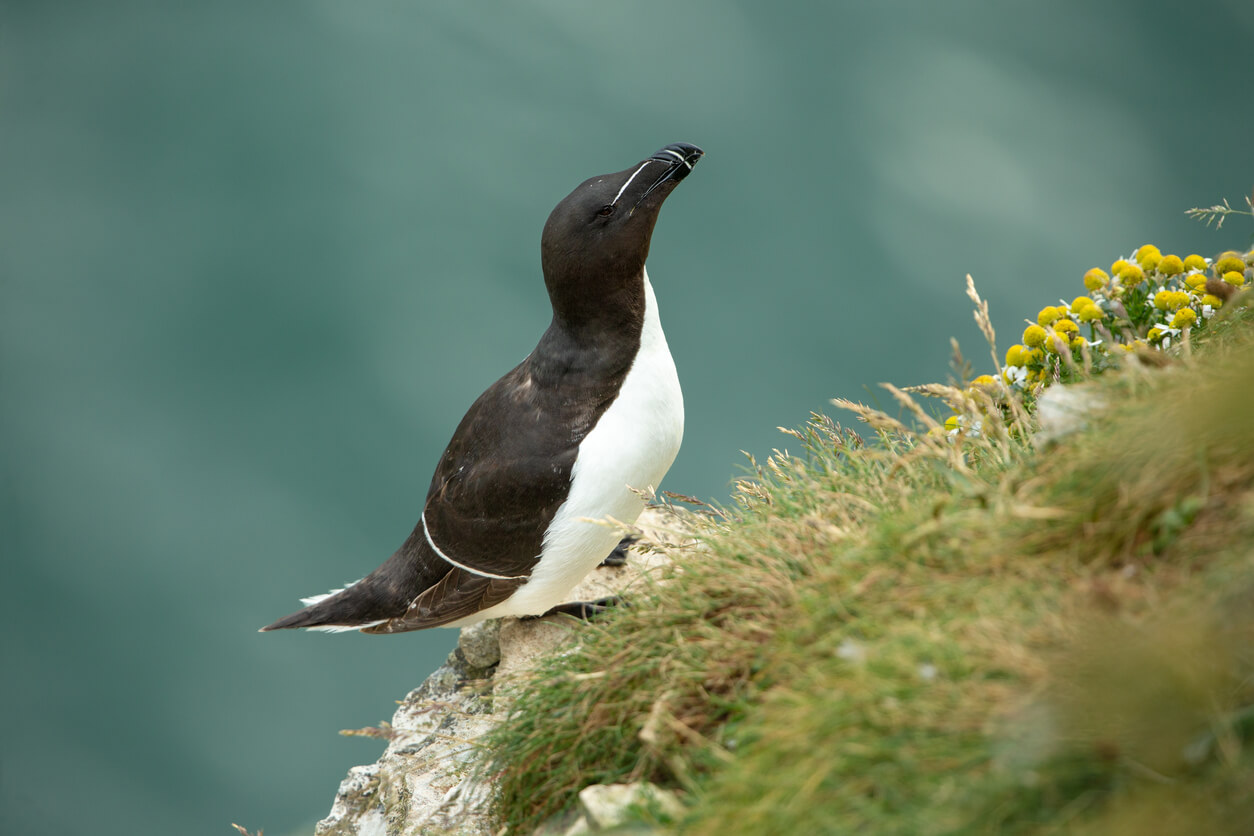
Admission to Bempton Cliffs is typically free for RSPB members and carers. Currently, Bempton Cliffs admission prices are:
- Adults: £7 March-October, £3.50 November-February
- Children: £3.50 March-October, £2 November-February (free for the first child and under 5 years old)
- Students: £5 March-October, £3 November-February.
Activities and Events
Along with birdwatching, Bempton Cliffs has some fantastic activities and events for all the family:
- Bempton Cliffs offer some of the best coastal walks in Yorkshire. The Headland Way coastal path goes through Bempton on its route from Bridlington to Filey.
- There are also self-guided trails to follow around the cliffs. The Puffin and Gannet trails are always popular, as are summer’s Wildlife Walks. Kids can pick up a Discovery Backpack that includes binoculars, a bird book and spotter sheets.
- Between May and September, visitors can take a Seabird Cruise from Bridlington harbour. The boat trip takes in the cliffs, gets up close to diving seabirds, and even heads to deeper waters to spot sea life.
- If Albie the albatross returns to the Yorkshire coast again in 2023, look out for a very special event on World Albatross Day (June 19).
Have the bustling edges of Bempton Cliffs sparked your imagination? Then browse our selection of Bridlington holiday cottages to book your next stay on the Yorkshire coast.